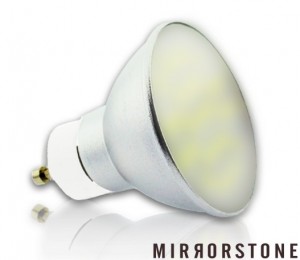Free shipping on orders over £50
TradeHURRY! SPRING SALE Now On! Get 10% Off Using Code KEEP10! Plus FREE SHIPPING On All Orders Over £50!
GU10 LED Bulbs For Brightness, Longevity & Energy-Efficiency

It really isn’t a secret that GU10 LED light bulbs are the best selling like-for-like replacements for outmoded incandescent and fluorescent bulbs, but let’s take a look at just a few of the facts to remind ourselves of the reasons why so many people are choosing to switch.
They’re Much More Energy Efficient And Cost-Effective
Just a few years ago, the cost of replacing your old incandescent and fluorescent (CFL) bulbs with LEDs would have been prohibitive.
The price of the new LED bulbs was sky high, but between 2011 and 2014 the price of household LEDs like the GU10 have undergone a dramatic and exponential fall, with rates varying from a 28% to a 44% reduction, depending on the lumen output.
Ironically, this is in direct contrast to the increase in energy-efficiency since their inception. Indeed, LED bulbs such as the GU10 LED Bulb 80 SMD now require just 3.3 watts of power to produce the same number of lumens of brightness as a 50 watt traditional incandescent bulb.
Thus, if you were to calculate the cost of running 20 x 50 watt incandescent bulbs for 8 hours a day, at a cost of 15.75 pence per kWh (kilowatts per hour), it would be £1.26.
Using exactly the same calculation, 20 x 3.3 watt GU10 LED bulbs would cost a mere 8.8 pence to run.
This extrapolates to a yearly energy cost of just £30.35 for the LEDs, compared to a whopping £459.90 for the incandescent bulbs, a saving of £429.55.
If you bear in mind that lighting accounts for up to 20% of our household energy expenditure, you’ll see just how much you can save simply by replacing your old bulbs with LEDs.
The reason GU10 LEDs are so cheap to run is that, unlike incandescent bulbs, they produce little or no heat. In light bulbs, heat is a wasteful by-product that serves no purpose. Incandescent bulbs lose around 90% of their energy to heat, leaving the remainder for light production. LEDs are exactly the opposite, meaning that they’re 90% more efficient.
The relative heat production also accounts for the vast difference in the longevities of the two types of bulb. Compared to the 1,200 hour life span of the incandescent bulb, the LEDs’ 50,000 hour life-expectancy seems like an eternity.
This means that you’ll have to replace your incandescent bulb every 1.6 months, but you’ll be able to forget about changing your GU10 LED for over 17 years!
Makes you think, doesn’t it?
Versatile And Bright
Not merely more cost-effective, GU10 LEDs are also incredibly versatile. Available in many varieties, you’ll find one to suit your requirements perfectly, however bright or how intimate your room.
From the GU10 48 SMD 40 watt/268 lumens equivalent that requires just 2.5 watts of power, to the Dimmable GU10 LED Bulb 9W COB which produces 860 Lumens, there’ll be a light intensity that’s ideal for every room in your home. RGB (Red, Green, Blue) GU10s are also on offer, complete with their own dedicated remote controllers, enabling you to achieve some great lighting effects with just the touch of a button.
And that’s not all, because the majority of GU10 LED bulbs come in a choice of three colour temperatures, each of which will allow you to tailor the ambience of your room according to its function.
Many people choose the warm white (3000K) variety to create an air of calm and relaxation in their living areas; its mellow light is particularly convivial and ideally suited to bedroom or living room use.
Cool white (6000K) light is a great temperature for functional areas like the kitchen and bathroom, as its bright, penetrative light enhances the feeling of sterility and provides perfect illumination for the accurate undertaking of tasks like cooking and personal grooming.
Traditionally used in office environments, the daylight white (4000K) provides a very naturalistic light quality that more people are now beginning to consider for every room. Aptly named, it is the closest approximation to actual daylight that’s available in the GU10 range.
So you see that, even without the fact that by the 1st of September 2018, all traditional incandescent bulbs are to be phased out and their production banned, GU10 LED bulbs have already achieved a truly superior position on all fronts, and the benefits of switching will only continue to grow as time goes by.






 Search
Search


